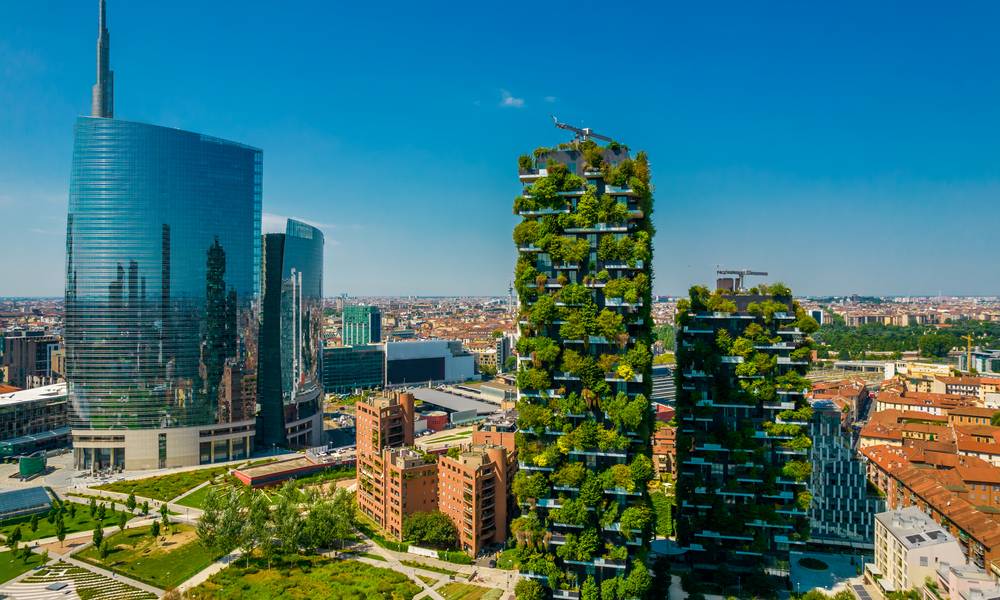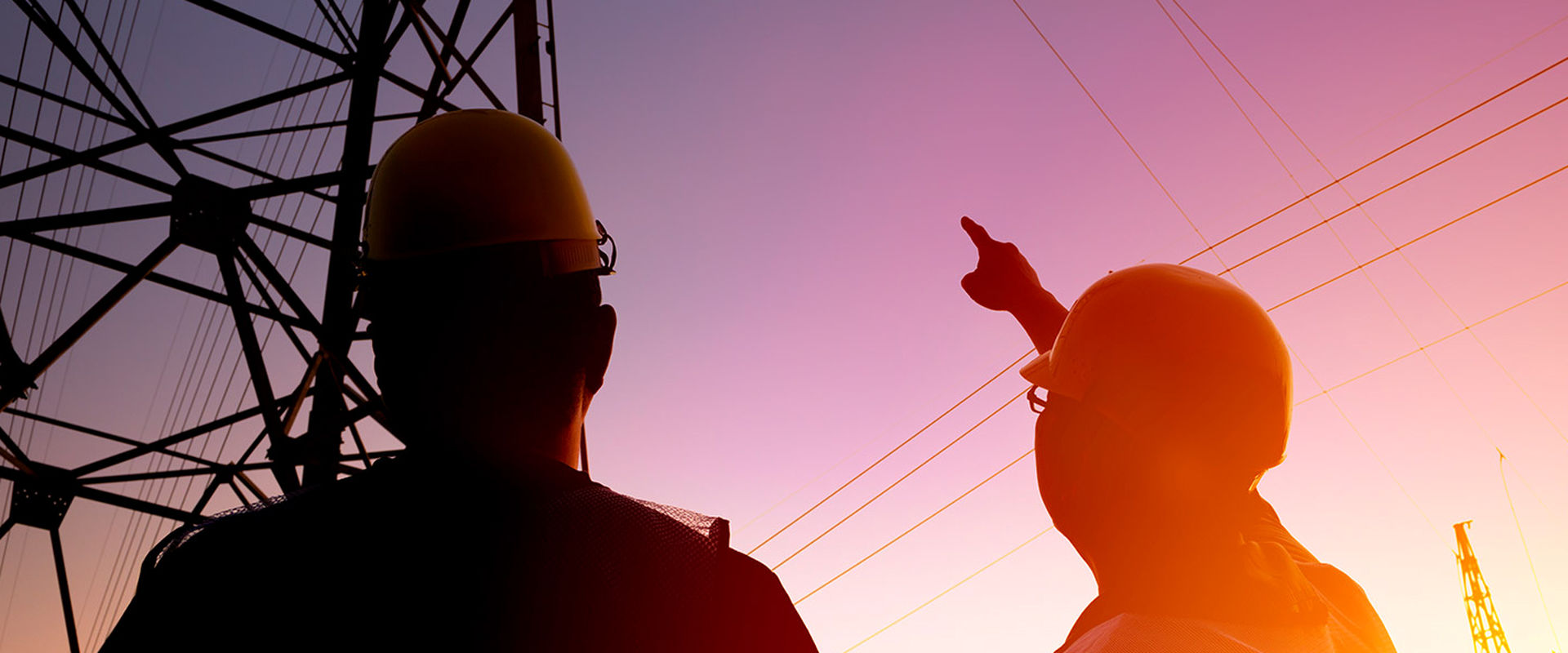Cities are particularly affected by the impacts of climate change. Especially in the global south, rising temperatures in increasingly densely populated areas threaten to have dramatic consequences for the people living there. Finding fair and sustainable ways of cooling is thus becoming central challenge. We show you how cities around the world are taking up the fight against heat and the role digital technologies can play as leverage for more heat-resilient urban habitats.
While the effects of climate change are being felt all over the world, urban areas are particularly affected by the consequences of this development. Worldwide, temperatures in cities are rising twice as fast as the global average[1]. Experts predict that many of the world's cities will warm by up to 4°C by the end of the century if greenhouse gas emissions remain at current levels[2].
The consequences of this rise in temperature for health, productivity and energy infrastructure do not affect all regions of the world to the same extent, but depend on their socio-economic status. Regions and communities with lower income levels – especially in the global south – are at significantly greater risk from climate change. For example, immigrant workers in the U.S. – typically minimum wage earners – are three times more likely to be affected by heat impacts than the U.S. average.
Sustainable urban cooling as an urgent challenge in cities worldwide
These inequalities will worsen in many regions in the coming decades due to expected further urbanization. According to calculations, 68% of the world's growing population will live in cities by mid-century, much of it in low-income countries in Africa and Asia. India, China and Nigeria alone are expected to account for 35% of the expected population growth – three countries that are already suffering, in some cases severely, from the phenomenon of overheated urban centers.
Cities around the world are therefore facing the question: How can the growing demand for cooling be met – without further exacerbating the downward spiral in which, for example, more cooling by air conditioning systems in turn leads to more heating due to waste heat?
Holistic approach at several levels
Ensuring fair and sustainable access to cooling requires a holistic approach. In its report „Beating the Heat“[3] the UN Environment Program (UNEP) describes three levels to combat overheating in urban areas:
- Climate-resilient urban planning and infrastructure
The greatest leverage for fair and efficient cooling of city centers is offered by sustainable and heat-reducing city, neighborhood and district planning. On the one hand, this includes forward-thinking land use and building design with elements such as green spaces and water features, fresh air corridors or measures to reduce motor traffic. And it also includes the reduction of waste heat through heat-reflective building envelopes and other surfaces.
- Energy efficient and thermally effective buildings
In addition to forward-thinking urban planning, energy- and heat-efficient buildings contribute to efficient cooling of city centers. The focus is on passive building cooling, e.g., through natural ventilation, green building envelopes or smart orientation to protect against high solar radiation.
- Efficient and demand-oriented cooling technologies and methods
Where passive cooling options are not sufficient, efficient cooling technology optimally adapted to the respective ambient conditions must be used that consumes as little energy as possible and causes as few emissions as possible. This includes, for example, intelligently controlled water cooling in larger buildings or municipal district cooling networks.

The "vertical forest" (Bosco Verticale) in Milan, Porta Nuova, Italy
Global best practices for heat-adapted cities
Around the world, there are many examples of cities leading the way with climate and socially just solutions. Some of them are presented below:
- Medellìn, Columbia
After years of strong, unplanned growth that led to high levels of land sealing and increasing air pollution, the city launched a comprehensive initiative in 2016 to renaturalize the metropolis. Under the banner of "Environmental Urbanism," 36 green corridors were created along streets and waterways throughout the city, covering a total area of more than 70 hectares. 8,300 trees and more than 350,000 shrubs not only enhance the quality of life and biodiversity in the city, but also provide natural cooling. As a result, the temperature along one of the city's busiest streets drops by up to 3°C on an annual average[4].
- Barcelona, Spain
Compared to other major European cities, the Catalan capital has a very low proportion of green spaces in the urban area. To counteract this, the city is relying on so-called superblocks: This involves combining up to nine blocks into a single unit and largely closing the streets within this unit to car traffic. This creates green, traffic-calmed zones in the middle of the densely populated inner city. Starting from the pilot district of Poble Nou, 503 such superblocks are to be built in the coming years.
- Gujarat International Finance Tec City, India
In the Indian state of Gujarat, a business district is being built on an area of around 350 hectares. With a total of 5.8 million square meters of floor space, it will be more densely developed than the business districts of Tokyo or London. India's first city-wide district cooling network was set up to efficiently meet the enormous cooling needs of the numerous office buildings, apartments, schools, hospitals and stores. According to a study, this reduces energy consumption by around one third compared to individual cooling solutions in the respective buildings[5].
- Toronto, Canada
The City of Toronto uses the natural cold water resources at the bottom of Lake Ontario to supply various buildings in the city with environmentally friendly cooling water. For this purpose, water with a temperature of 4°C is taken from Lake Ontario from a depth of approx. 83m and pumped via a pipeline system to the city's district cooling plant.. In the district cooling plant, the cold water is collected, treated and piped as district cooling through an underground pipeline network to the cooling consumers. This project will reduce the electricity demand for cooling the buildings by 75%[6].
- Mexico City, Mexico
The Mexican capital has experienced strong population growth in recent years. From today's perspective, the resulting living space mostly does not meet the requirements for energy-efficient construction. To achieve its goal of reducing CO2 emissions by 50% from 2000 levels by 2050, the city has launched a comprehensive sustainable building retrofit incentive program. The special feature: The program's flexibility. Both landlords and tenants can apply for grants for individual, smaller investments in more sustainable building infrastructure, such as green roofs or rainwater storage. Compared to the 2009 baseline, the program saved a total of 20.1 million kWh of electricity and 66,120 metric tons of CO2 in the 40 buildings certified by 2015[7].
Digitalization as leverage
Metropolises around the world have developed diverse, sustainable, and equitable solutions to cool their downtowns and mitigate the effects of climate change. Digital technologies often act as enablers in these efforts, whether it is calculating robust analyses and action plans, operating smart city solutions, or enabling people to participate in communities and neighborhoods.
For example, with the help of AI-based planning tools, new buildings or newly planned neighborhoods can be optimally adapted to the microclimate prevailing there from the outset and the effects of building orientation, building spacing or surface structures on heat generation can be calculated.
In existing buildings or neighborhoods, on the other hand, the use of sensor technology and intelligent components enables demand-based and thus energy-efficient control of building cooling, shading or irrigation in a smart city context.
Sources:
[1] Energy Sector Management Assistance Program (2020). Primer for Cool Cities: Reducing Excessive Urban Heat.
[2] Zhao, L., Oleson, K., Bou-Zeid, E., Krayenhoff, E.S., Bray, A., Zhu, Q. et al. (2021). Global multi-model projections of local urban climates. Nature Climate Change 11, 152-157
[3] Beating the heat: A sustainable cooling handbook for cities (2021), UNEP
[5] Gujarat International Finance Tec City (2023)
[6] Beating the heat: A sustainable cooling handbook for cities (2021), UNEP
[7] Urban Efficiency II: Seven Innovative City Programmes for Existing Building Energy Efficiency, C40 Cities Climate Leadership Group




